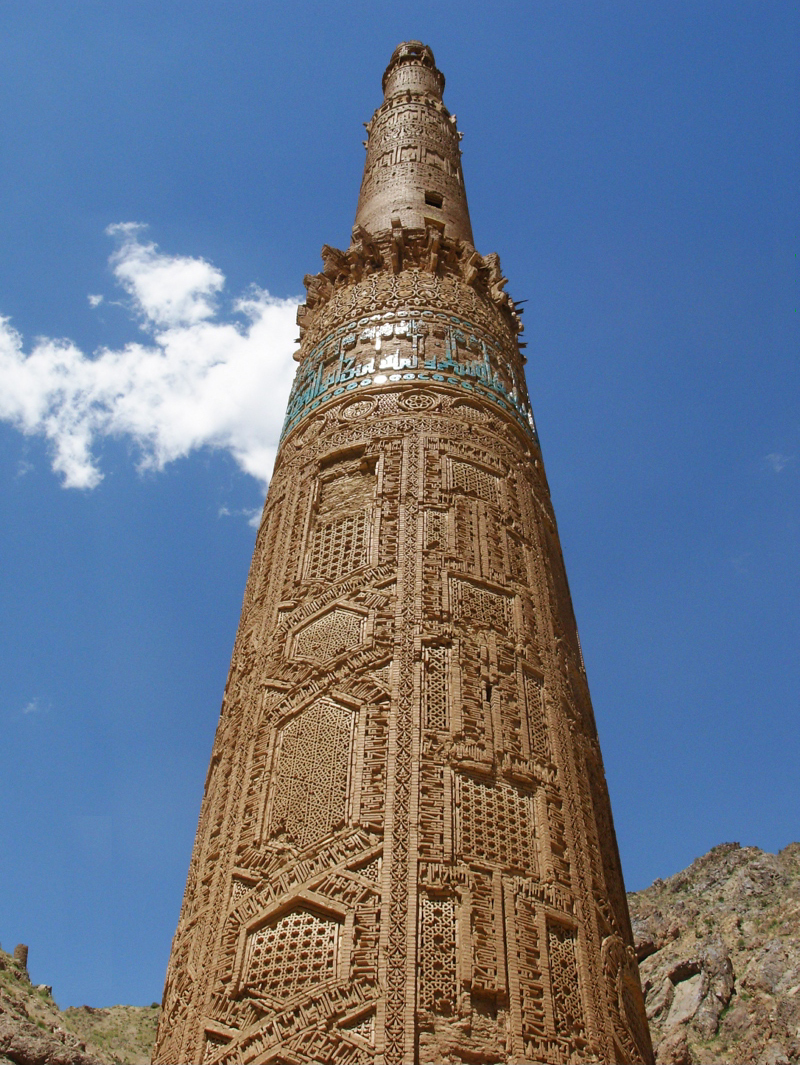Uncovering the Mysteries of Afghanistan’s Minaret of Jam – Hidden Marvels

Nestled amidst the rugged terrain of Afghanistan, concealed within a valley surrounded by towering mountains, lies a testament to human ingenuity and architectural brilliance: the Minaret of Jam. Standing an impressive 65 meters tall, this ancient minaret is a remarkable symbol of Afghanistan’s rich cultural heritage and serves as a poignant reminder of the country’s storied past. Located in the Shahrak district of the city of Gor, the Minaret of Jam was constructed in the 12th century and continues to awe and inspire visitors from around the world with its beauty and historical significance.
The Minaret of Jam is a marvel of medieval Islamic architecture, characterized by its elegant proportions, intricate geometric patterns, and exquisite craftsmanship. Rising majestically from the valley floor, the minaret commands attention with its graceful silhouette and towering presence. Surrounded by mountains reaching heights of up to 2400 meters, the minaret is a striking juxtaposition of human creativity against the backdrop of nature’s grandeur, lending it an aura of mystery and allure.

Built during the height of the Ghurid Empire, the Minaret of Jam served as a symbol of the region’s prosperity and cultural sophistication. Its construction represents a feat of engineering prowess, with the minaret’s slender form supported by a solid brick core and adorned with intricate decorative elements. The surface of the minaret is adorned with bands of geometric patterns, calligraphy, and arabesques, reflecting the artistic traditions of the Islamic world and serving as a testament to the skill and dedication of the craftsmen who built it.
Despite its remote location and the passage of centuries, the Minaret of Jam has stood the test of time, remaining remarkably well-preserved despite the ravages of war, natural disasters, and the elements. Its survival is a testament to the resilience of Afghan heritage and the enduring legacy of Islamic civilization in the region. However, the minaret’s isolation has also contributed to its status as a hidden gem, with relatively few visitors having the opportunity to witness its splendor firsthand.

In addition to its architectural significance, the Minaret of Jam holds cultural and historical importance as well. It stands as a symbol of Afghanistan’s rich multicultural heritage, reflecting the diverse influences that have shaped the country’s identity over the centuries. As a UNESCO World Heritage Site, the minaret serves as a tangible link to Afghanistan’s past and a reminder of the need to preserve and protect its cultural treasures for future generations.
The Minaret of Jam also holds a special place in the hearts of the Afghan people, serving as a source of pride and inspiration in the face of adversity. Despite the challenges that Afghanistan has faced throughout its history, the minaret stands as a beacon of hope and resilience, a testament to the enduring spirit of its people.

However, the Minaret of Jam is not without its challenges. The remote location of the minaret, combined with the instability and insecurity that have plagued Afghanistan in recent decades, has made it difficult to access and maintain. Additionally, environmental factors such as erosion and seismic activity pose ongoing threats to the structural integrity of the minaret, necessitating ongoing conservation efforts to ensure its preservation for future generations.
In conclusion, the Minaret of Jam stands as a testament to the extraordinary mastery of its builders and the enduring legacy of Islamic civilization in Afghanistan. Hidden away in a valley between the mountains, this architectural gem continues to captivate and inspire all who encounter it, serving as a tangible link to the country’s rich cultural heritage and reminding us of the importance of preserving and protecting our shared human legacy.










